30 Wild Animals in Australia [Wildlife in Australia]
Want to know more about the wildlife in Australia?
Discover 30 wild animals in Australia in this post, as well as interesting facts about them. 🇦🇺
Learn All About Australian Animals
Ready to learn all about Australian animals?
I’ve always been fascinated by animals, and by how they can be so different from one country to another. In this guide, we’ll focus on the many animals Australia has on the land, in the sky, and underwater.
I’ve split the guide into 4 categories:
- Native animals from Australia
- Endangered animals of Australia
- What is the national animal of Australia?
- How many animals native to Australia?
Let’s dive in right away with our first category!
Native Animals from Australia
Australia, formally known as the Commonwealth of Australia, is a large Oceanian country located in the southern part of the continent. It has been inhabited for about 65,000 years, was colonized by Europe throughout the 17th century, is a megadiverse country, and is the largest island in the world (although Australia is made of one main island, the island of Tasmania, and many other smaller islands). It is surrounded by the Pacific Ocean, has lots of different landscapes and climates, and although its largest city is Sydney, its capital city is Canberra, which counts more than 431,000 inhabitants.
An interesting part of the country that I wanted to tackle is its wildlife. In light of that, I have listed the best of it, and I hope you will love learning what animals live in Australia.
Here’s the Australia animals list.
1. Red kangaroo
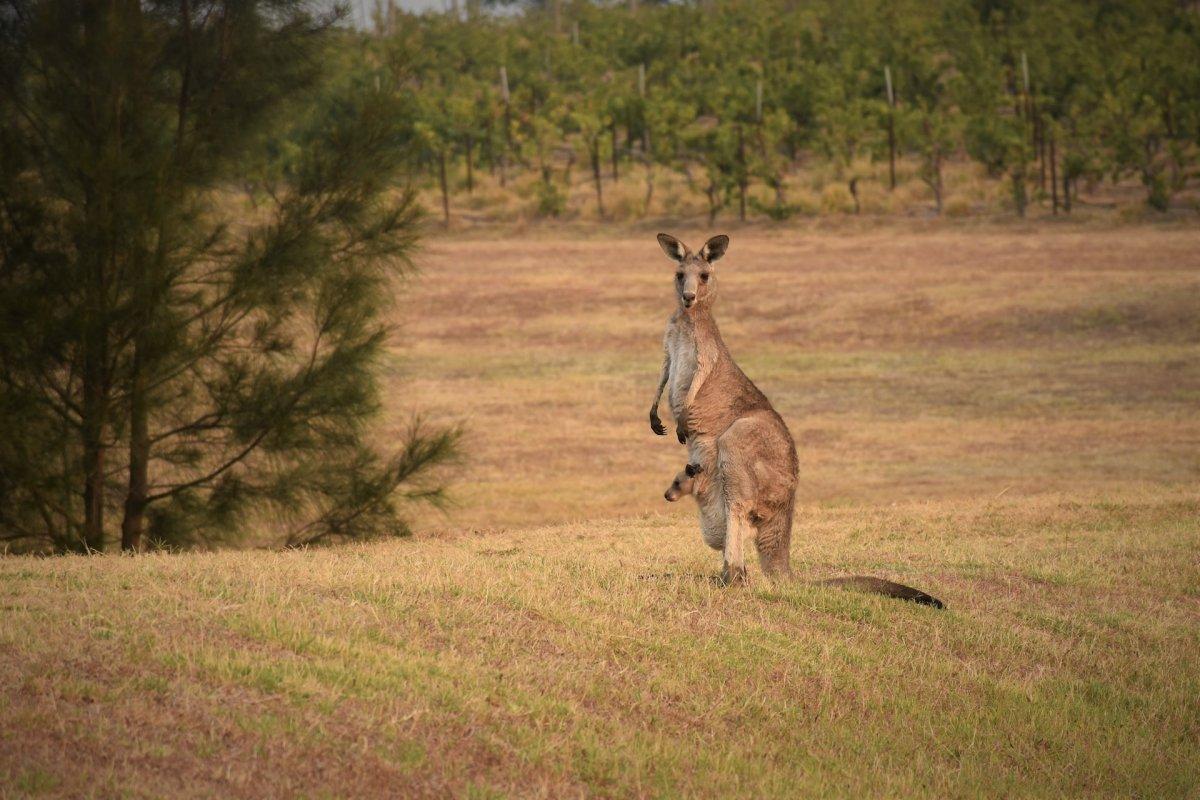
- Name: Red kangaroo
- Scientific name: Osphranter rufus
- Conservation status:
How could I write about Australia without mentioning its most unique and widely recognized symbol, the red kangaroo?
This species is the largest marsupial in the world and can be found throughout most of Australia, except for some fertile areas such as the eastern and southeastern coasts and the rainforests in the North. Living in desert, shrubland, and grassland habitats, it is well-known for its jumps and the way it fights, using its tail for balance.
2. Platypus
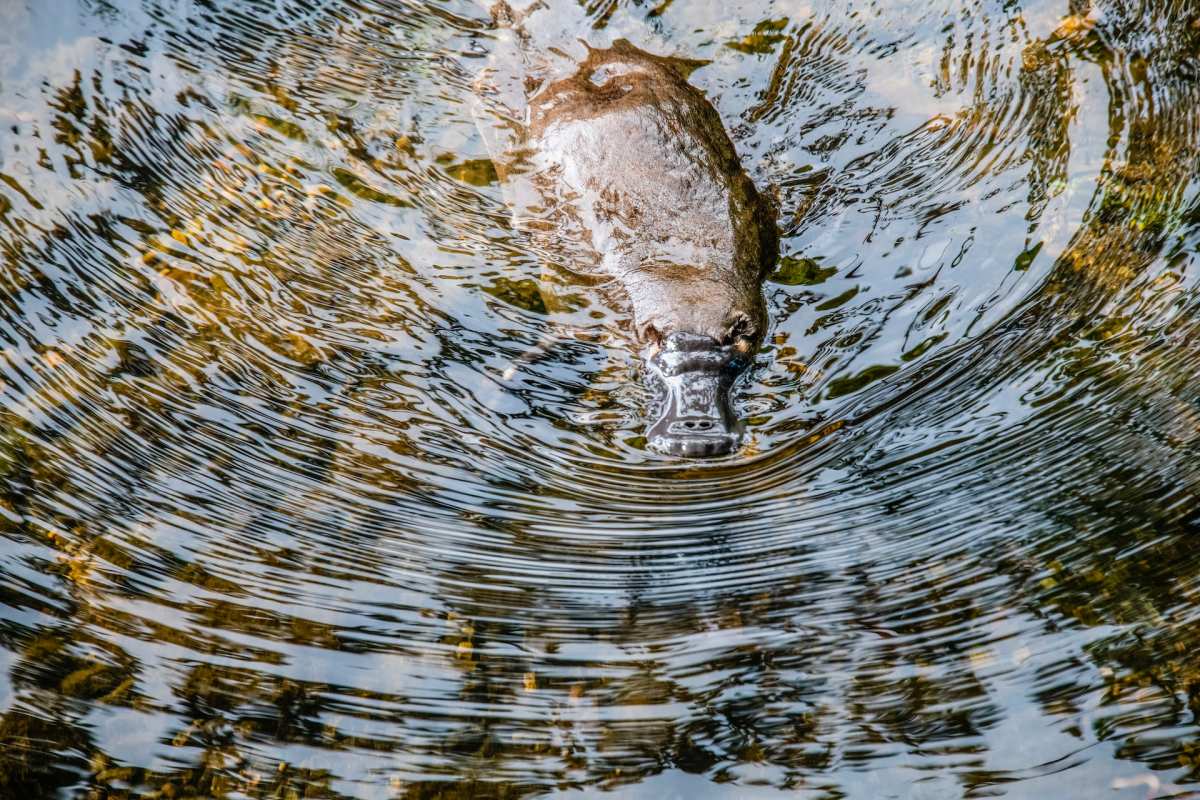
- Name: Platypus
- Scientific name: Ornithorhynchus anatinus
- Conservation status:
The platypus, also known as the duck-billed platypus, is a species of semi-aquatic mammal endemic to eastern Australia and Tasmania. It is one of the most unique mammals in the world since it actually lays eggs instead of giving birth to live young! Only echidnas also do that, and together they form monotremes.
This peculiar mammal is an important symbol of Australia, and also has a unique look: with a duck-like bill, a beaver-like tail, and webbed feet, it is truly a marvel of evolution!
3. Short-beaked echidna
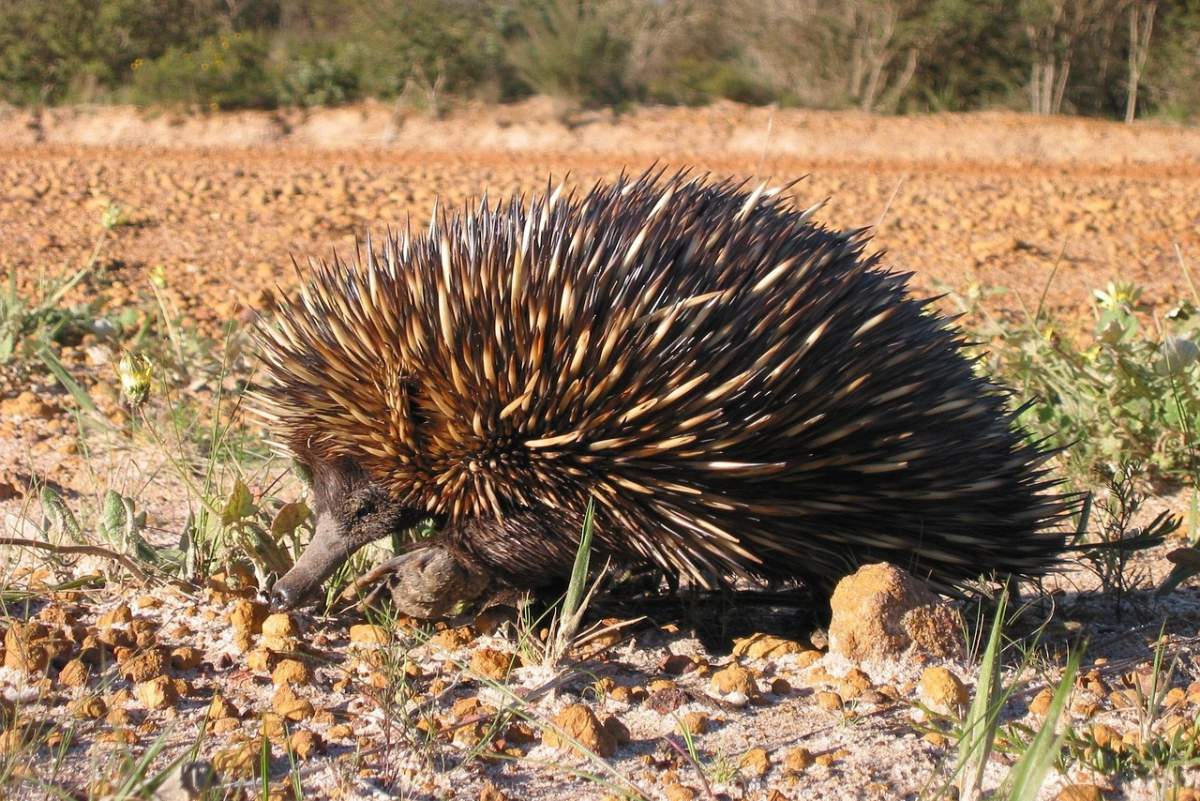
- Name: Short-beaked echidna
- Scientific name: Tachyglossus aculeatus
- Conservation status:
Speaking of echidnas, here is the only species that can be found in Australia, the other three being endemic to New Guinea. As I told you about, it also lays eggs and is a mammal, and it is sometimes called a spiny anteater.
The short-beaked echidna has, despite its small size, extremely strong front limbs and claws, which it uses to quickly burrow. It lives underground and curls into a ball when threatened by predators.
4. Tiger quoll
- Name: Tiger quoll
- Scientific name: Dasyurus maculatus
- Conservation status:
The tiger quoll, also known as the spotted-tail dasyure, the spotted-tail quoll, the spotted quoll or the tiger cat, is the largest species of carnivorous marsupial found in Australia, and the second-largest in the world behind the Tasmanian devil.
This animal can be found in the eastern parts of Australia, where there is lots of rain. Although merely listed as near threatened, its population is rapidly declining, and a new assessment might need to happen very soon.
5. Tasmanian devil
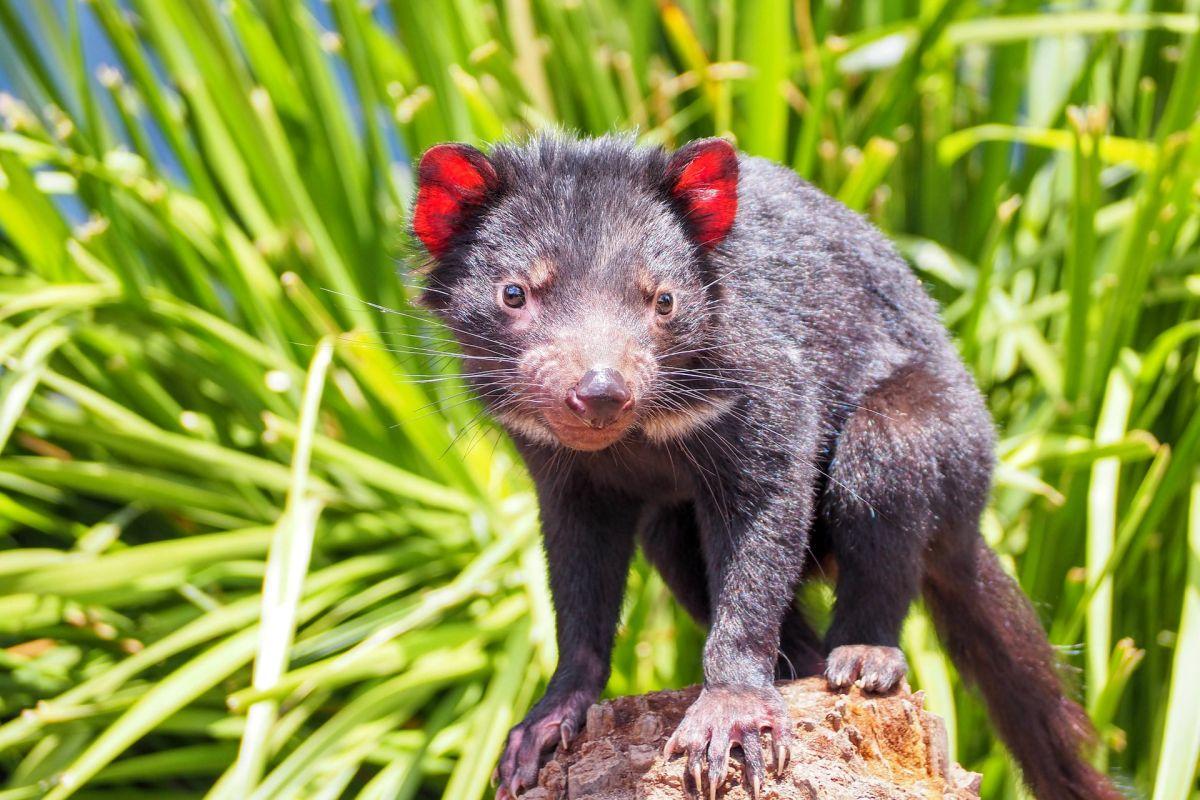
- Name: Tasmanian devil
- Scientific name: Sarcophilus harrisii
- Conservation status:
Have you ever watched Looney Tunes as a kid? If so, did you wonder what that aggressive, brown ball of fur named Taz wanted, outside of eating? Well, we still don’t really know, but what we know for sure is that Taz is short for… the Tasmanian devil.
This marsupial is carnivorous, and endangered. It is usually solitary, and is about the same size as a small dog, but is still the world’s largest carnivorous marsupial. The Tasmanian devil used to be endemic to Tasmania, but a small population has been introduced to southern Australia.
6. Koala
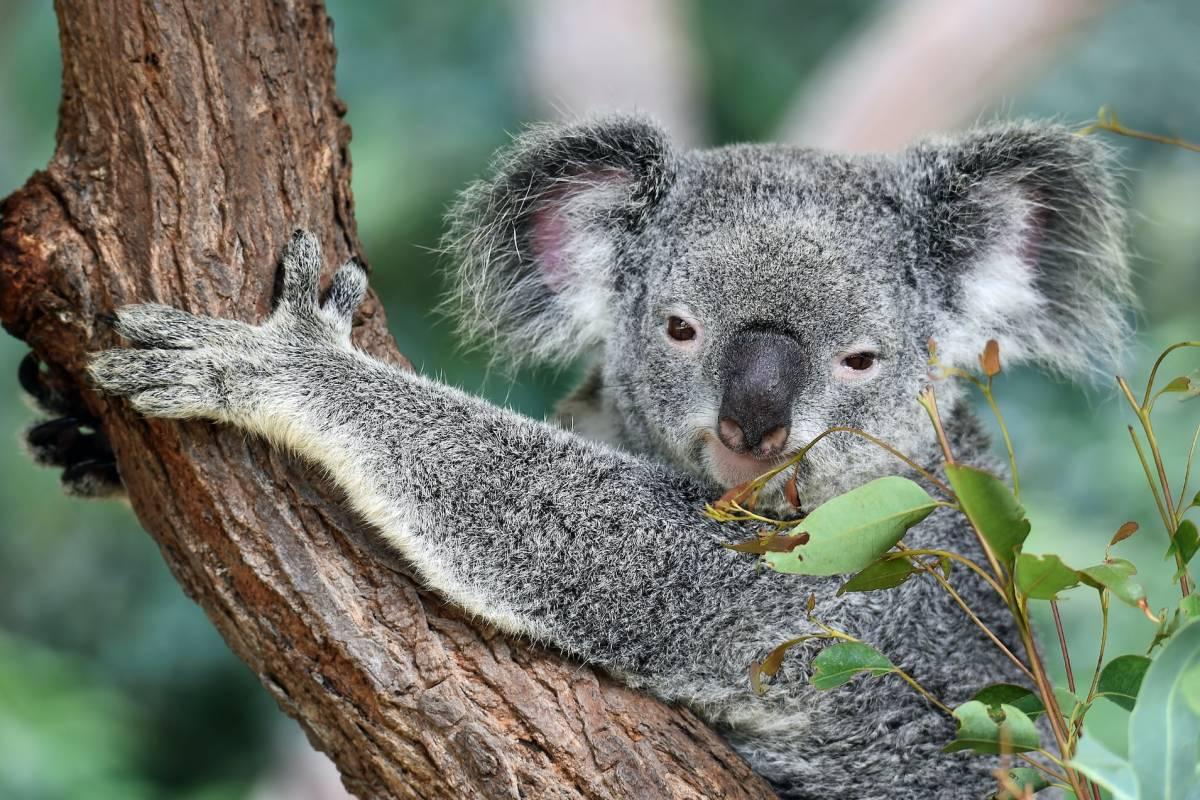
- Name: Koala
- Scientific name: Phascolarctos cinereus
- Conservation status:
The koala, also known as the koala bear, is a species of marsupial native to Australia. It can be found in coastal areas of mainland Australia, mostly in the eastern- and southernmost parts of the country.
This mammal is herbivorous and arboreal, almost exclusively feeds on Eucalyptus, and does not need to drink: instead, it obtains enough moisture from the leaves it eats. The koala is also a very important symbol of Australia, and it is seriously threatened by bushfires, droughts, and urbanization, and was even listed as endangered in some areas of Australia.
7. Sugar glider
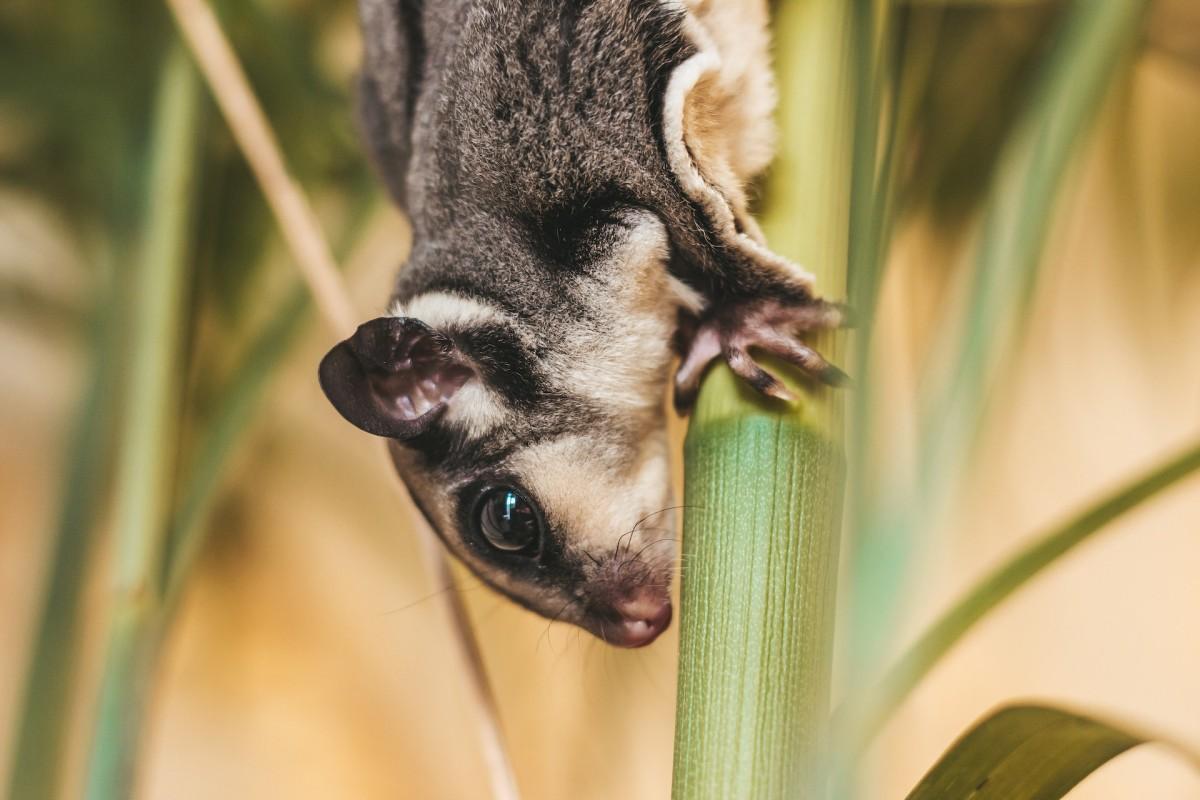
- Name: Sugar glider
- Scientific name: Petaurus breviceps
- Conservation status:
The sugar glider is a small species of possum native to southeastern Australia. It is arboreal, nocturnal, and omnivorous, and gets its name from its diet, mostly made of nectar and sap, as well as its ability to glide through the air, from tree to tree, just like a flying squirrel (although it has nothing to do with the squirrel in terms of species!).
This mammal glides in order to find food, but also to escape predators.
8. Dingo
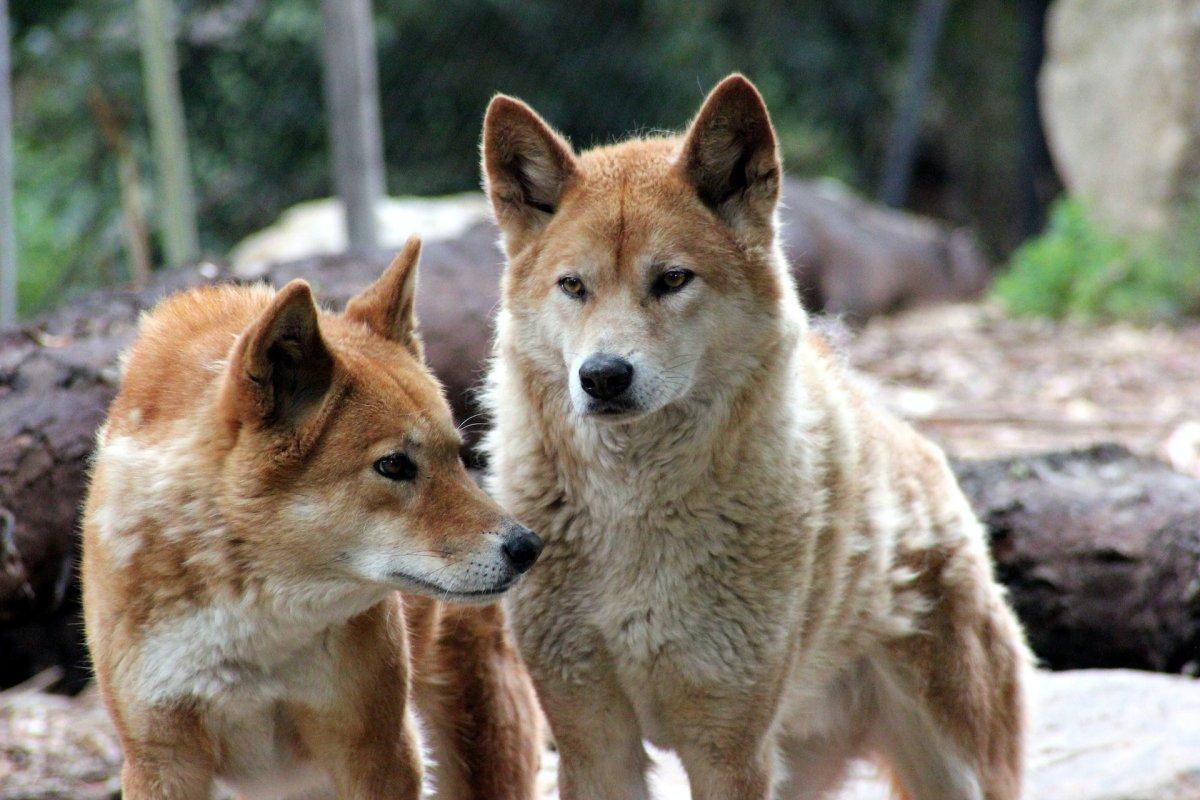
- Name: Dingo
- Scientific name: Canis familiaris
- Conservation status:
The dingo is a medium-sized species of canine native to much of Australia. It was one of the first mammals introduced to Australia by humans, about 4,000 years ago, and it is considered a feral dog since it descended from domesticated ancestors.
This dog species mostly feeds on mammals, but also on vegetation, birds, reptiles, insects, and fish. Depending on the region, it can be active by day or night, and it generally avoids conflict with humans.
9. Dugong

- Name: Dugong
- Scientific name: Dugong dugon
- Conservation status:
The dugong is a large species of marine mammal, and one of four species of Sirenia, alongside the three species of manatees. It can be found throughout much of the Indo-Pacific coastlines, across 40 countries, and all across the northern coast of Australia.
This mammal has been hunted for thousands of years for both its meat and oil, and traditional hunting is still very important in some areas, namely the Pacific Islands.
10. Emu
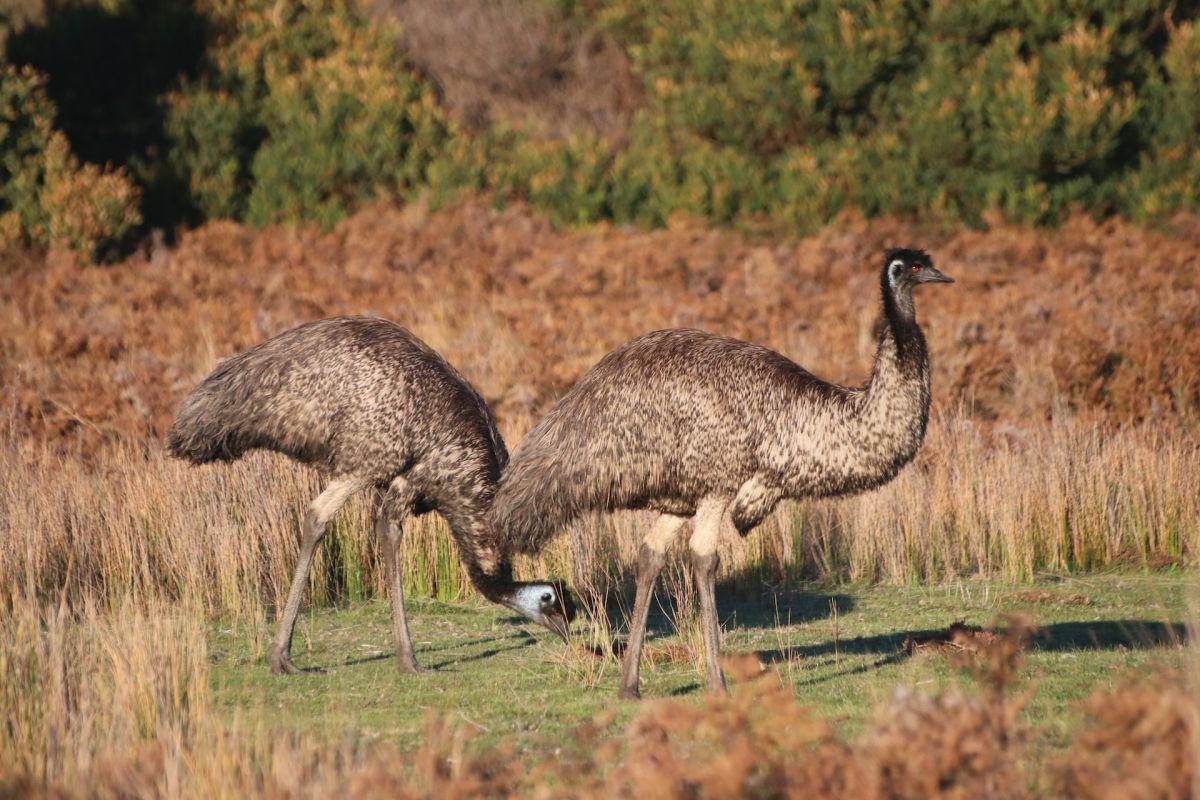
- Name: Emu
- Scientific name: Dromaius novaehollandiae
- Conservation status:
The emu likes the number 2: it has 2 legs, is the second-largest bird by height after the ostrich, and is the second symbol of Australia alongside the kangaroo, being featured on the country’s coat of arms.
This flightless bird is endemic to Australia and is fairly widespread and common. However, it still suffers from the predation of its eggs, habitat fragmentation, and roadkills; in some areas, it is listed as endangered, and some subpopulations have already gone extinct.
11. Gang-gang cockatoo
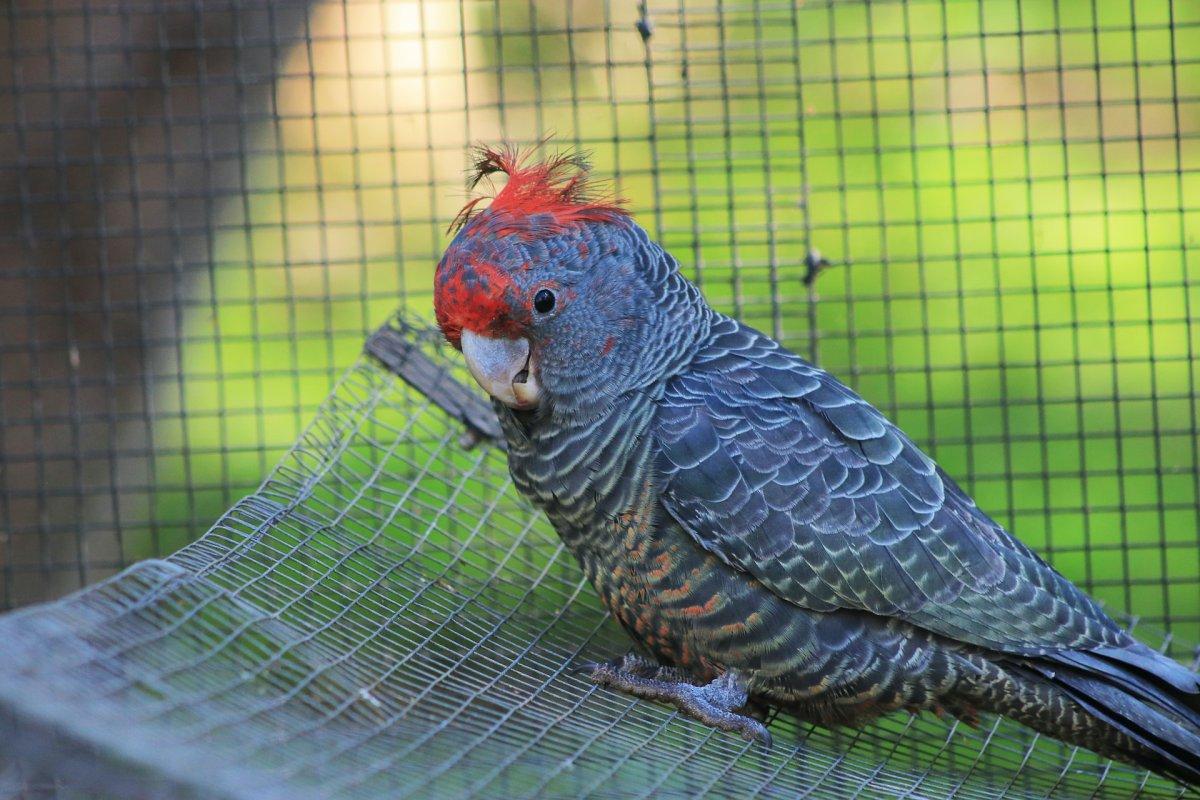
- Name: Gang-gang cockatoo
- Scientific name: Callocephalon fimbriatum
- Conservation status:
With a unique, funny name, the gang-gang cockatoo is a species of parrot native to the southeastern parts of Australia. It inhabits alpine bushland, and only males wear a characteristic, bright red crest on top of their heads.
This cockatoo has an onomatopoeic name (its cry sounds like “gang-gang”) that comes from one of the indigenous, coastal languages of Australian peoples. Despite being listed as least concern, the gang-gang cockatoo is threatened by habitat loss.
12. Saltwater crocodile
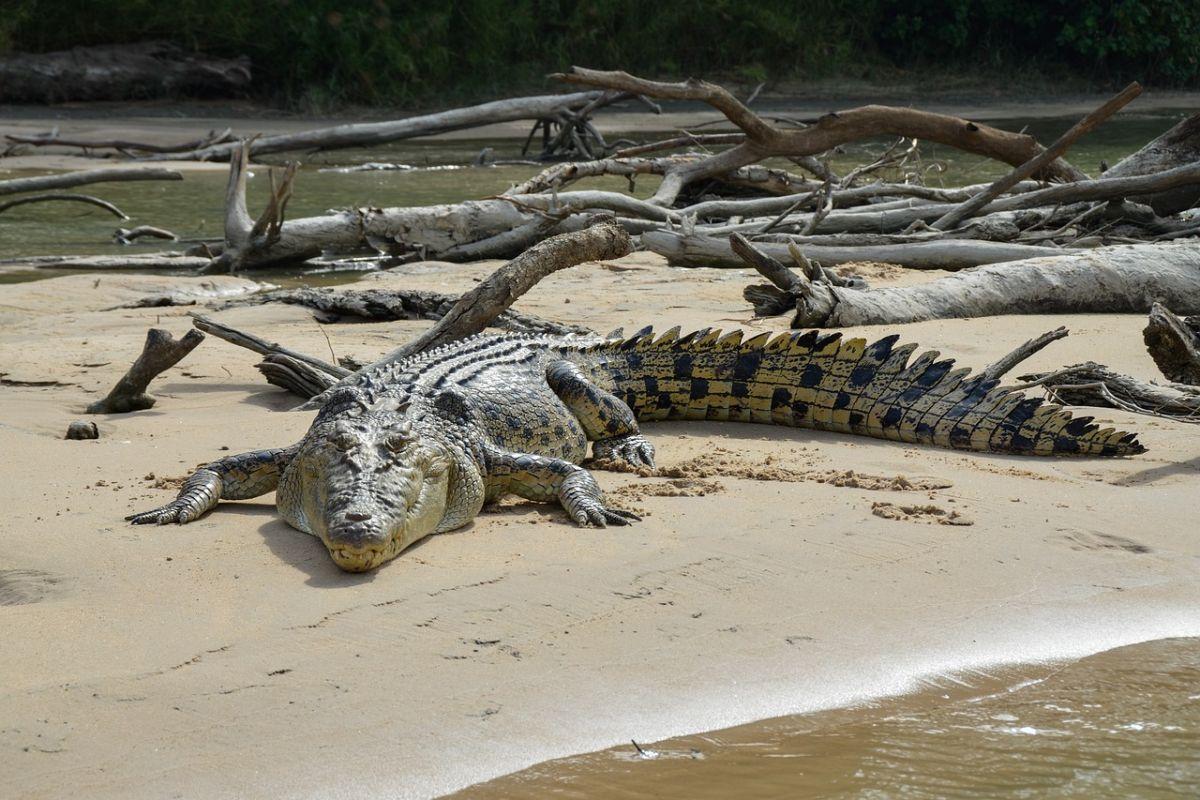
- Name: Saltwater crocodile
- Scientific name: Crocodylus porosus
- Conservation status:
The saltwater crocodile is the largest reptile and crocodilian on the planet, reaching lengths of up to 6.3 m / 21 ft and weights of 1,300 kg / 2,900 lb! Also known as the Indo-Pacific crocodile, the sea crocodile, or the estuarine crocodile, it is one of the few crocodiles that tolerate saltwater, and it can be found throughout the Indo-Pacific, from northern Australia to the Indian subcontinent.
This animal of all records is an opportunistic, hypercarnivorous apex predator that ambushes its prey, which is mostly mammals, reptiles, and birds, but it can attack and kill anything within its range, including humans and sharks.
13. Common seadragon
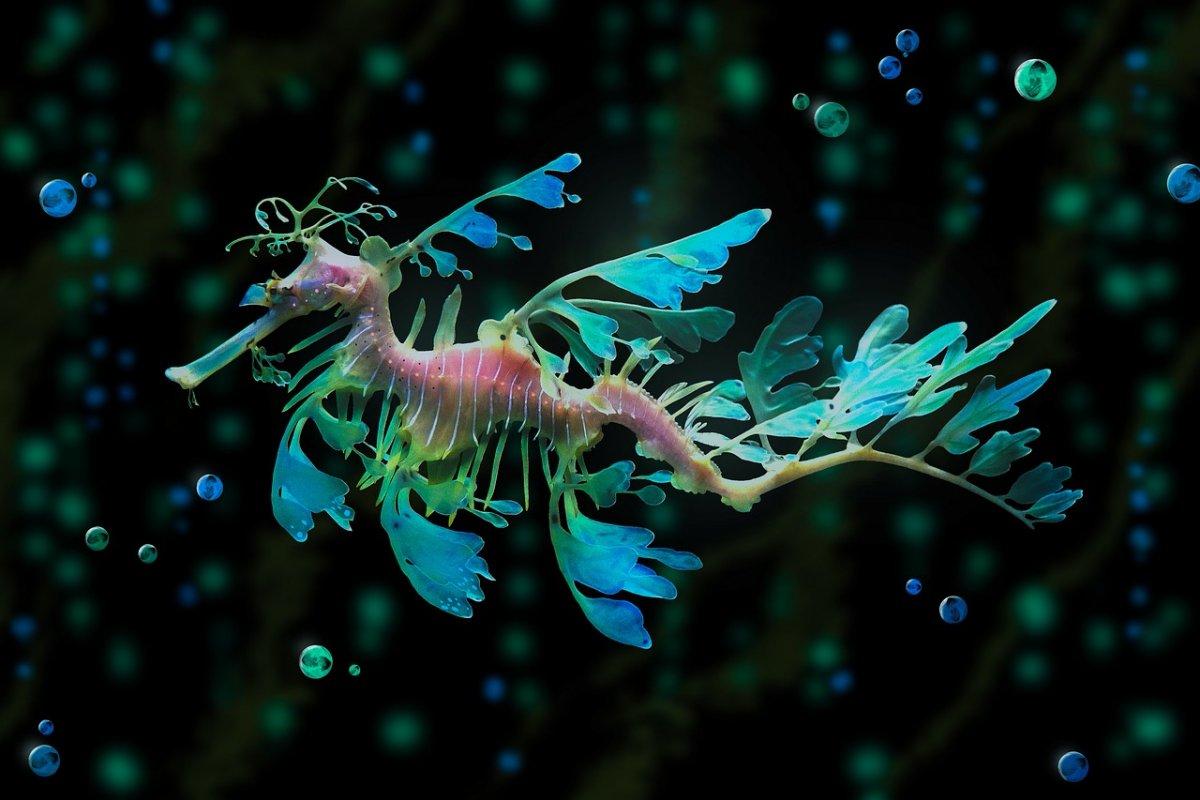
- Name: Common seadragon
- Scientific name: Phyllopteryx taeniolatus
- Conservation status:
We haven’t discussed it yet, but since Australia is an island, in a beautiful region with ideal weather, it does have incredible marine life, such as the common seadragon.
This fish species is related to the seahorses and is the emblem of the Australian state of Victoria. It is endemic to the southern coasts of Australia, including the island of Tasmania, and, since it mostly drifts slowly, it relies on its camouflage as protection against potential predators.
14. Spotted wobbegong
- Name: Spotted wobbegong
- Scientific name: Orectolobus maculatus
- Conservation status:
The spotted wobbegong is a large species of shark endemic to the southern coastline of Australia. It can reach up to 3 m / 9.8 ft and has unique O-shaped spots all over its body. It rests during the day and feeds on fish and invertebrates at night.
This shark can produce severe wounds to humans, and it is known to bite even when unprovoked. It is fished commercially in Australia but is not threatened whatsoever.
15. Flat huntsman spider
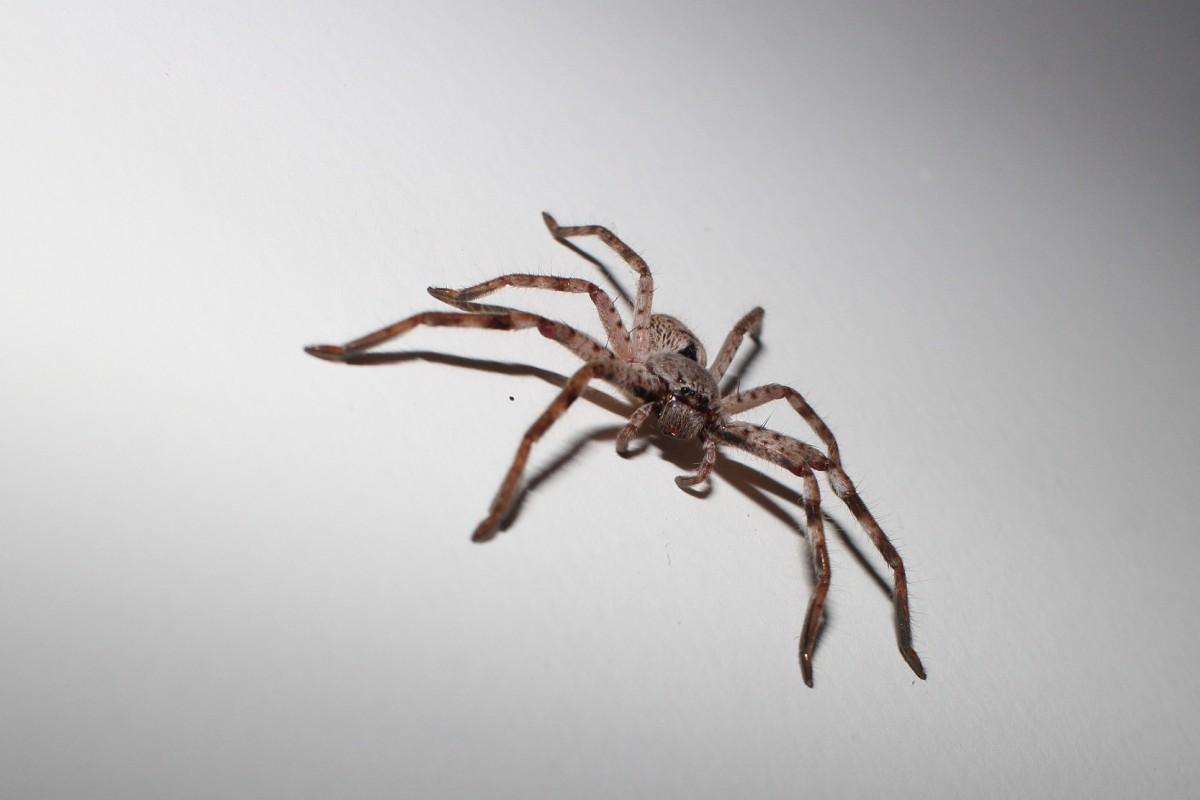
- Name: Flat huntsman spider
- Scientific name: Delena cancerides
- Conservation status:
You may know Australia for its numerous, scary dangers such as spiders and scorpions, and although there are indeed lots of them, let’s settle for this one spider… it is more than enough, right?
The flat huntsman spider, also known as the social huntsman, is a large species of spider native to Australia and introduced to New Zealand. Despite its very large body and frightening fangs, as well as its depiction in movies such as “Arachnophobia”, it is harmless to humans!
16. Ocellaris clownfish
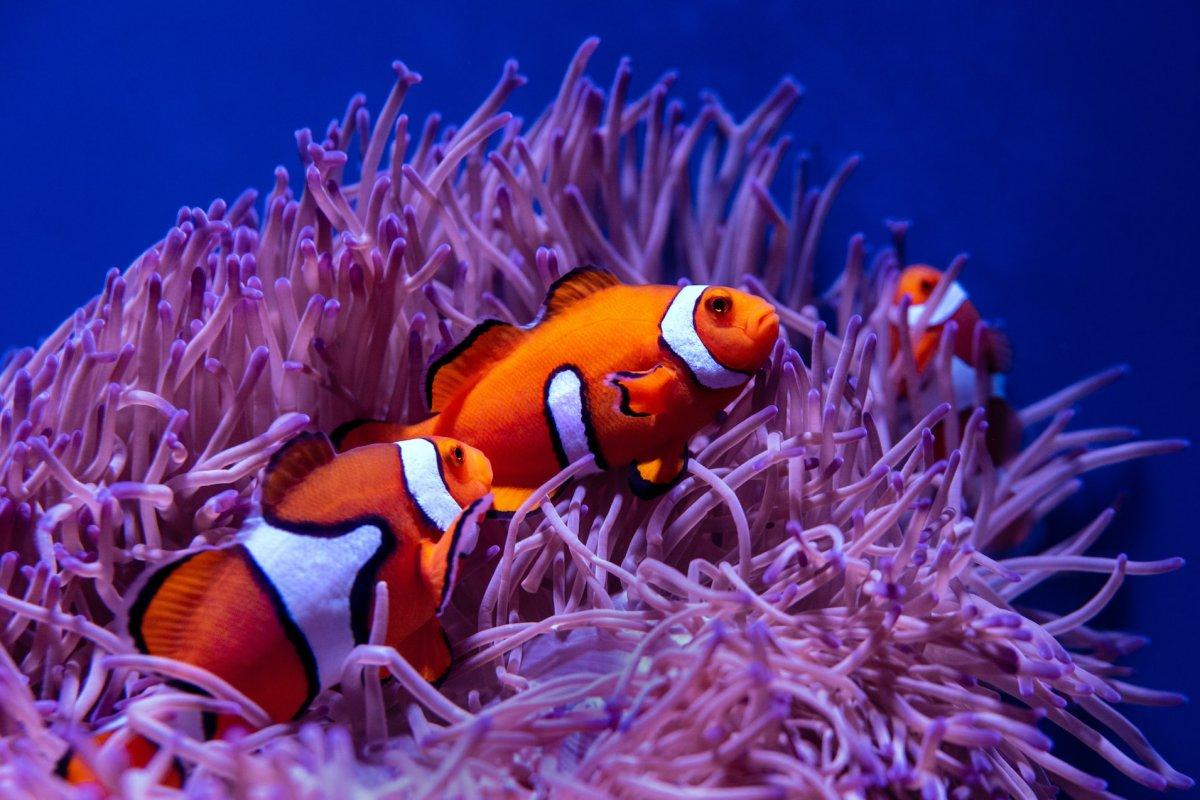
- Name: Ocellaris clownfish
- Scientific name: Amphiprion ocellaris
- Conservation status:
For people who still shiver from seeing the large spider, here is something that will bring you joy: the ocellaris clownfish, which inspired Pixar’s “Finding Nemo”.
Also known as the common clownfish or the false percula clownfish, it is a species of marine fish that can actually have different colors, even black or red-brown. It is a hermaphrodite that can change its sex throughout its life, and it forms harems with a strict hierarchy.
17. Magnificent sea anemone
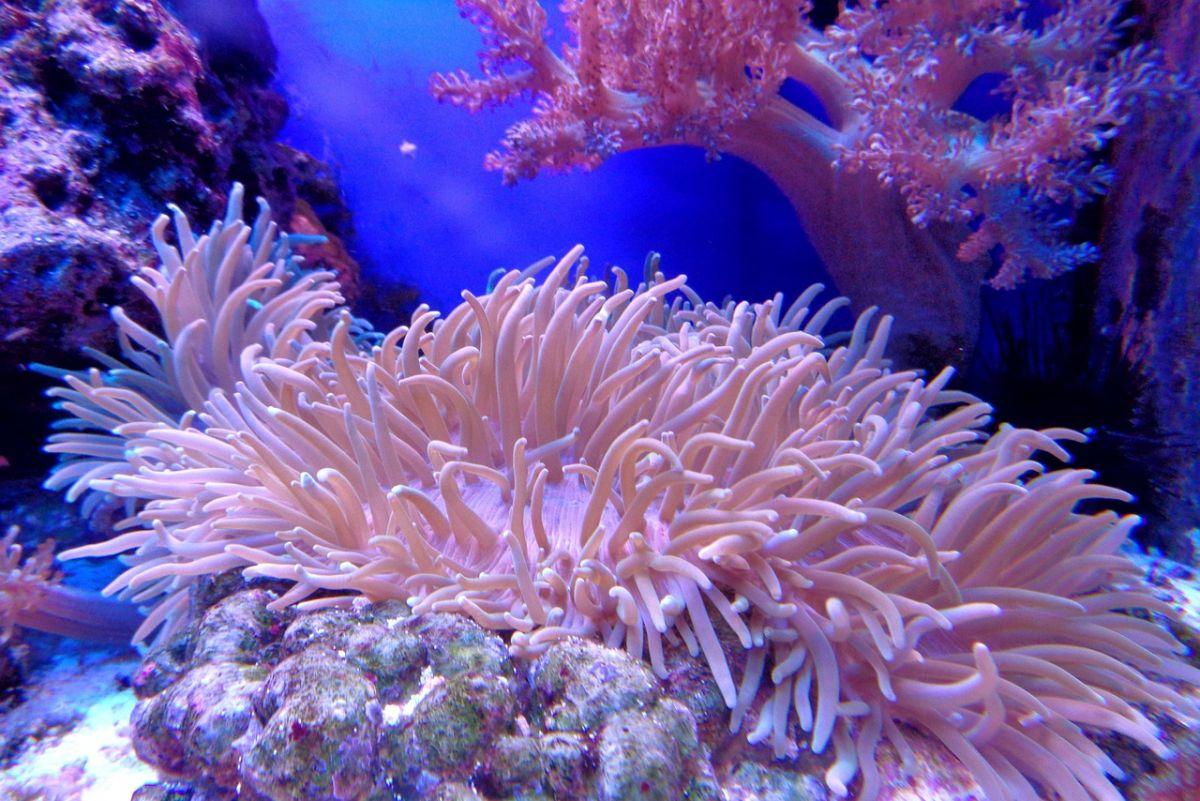
- Name: Magnificent sea anemone
- Scientific name: Heteractis magnifica
- Conservation status:
After the clownfish comes its habitat: the anemone! Australia is extremely famous for its Great Reef Barrier, one of the seven natural wonders of the world.
There, you will find fantastic wildlife such as the magnificent sea anemone, also known as the Ritteri anemone. This sea anemone is native to the Indo-Pacific area, and can also be found around the eastern coasts of Africa. It either feeds through the photosynthesis of the species living in its tissues… or by catching, stunning, and consuming small invertebrates or fish!
18. Red imported fire ant
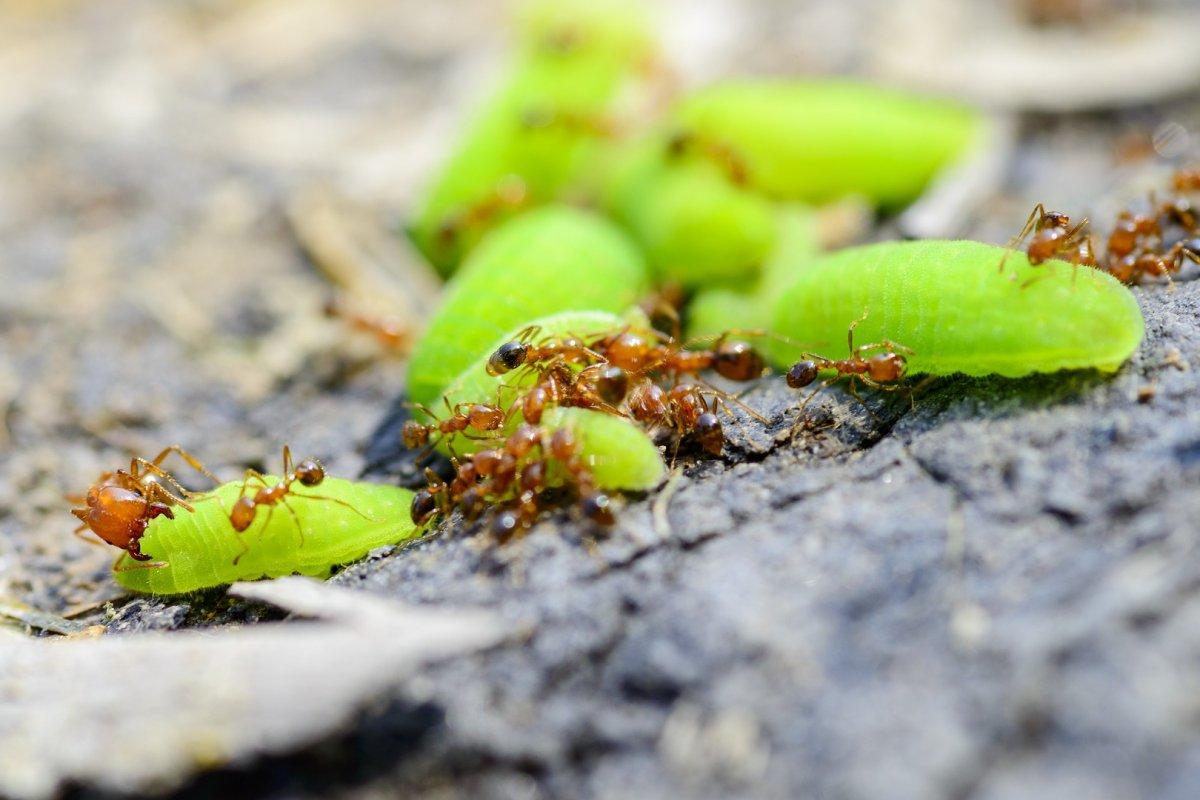
- Name: Red imported fire ant
- Scientific name: Solenopsis invicta
- Conservation status:
The red imported fire ant, also known as the RIFA or the fire ant, is one of the most invasive species in Australia. Native to South America, it has been accidentally introduced to much of the world, from the United States to Australia and Asia.
This ant is a famous pest that causes billions of dollars in damage every year and destroys its surrounding habitat. It thrives in urban areas, and builds nests that can cause structural problems and even make buildings collapse!
19. Sand tiger shark
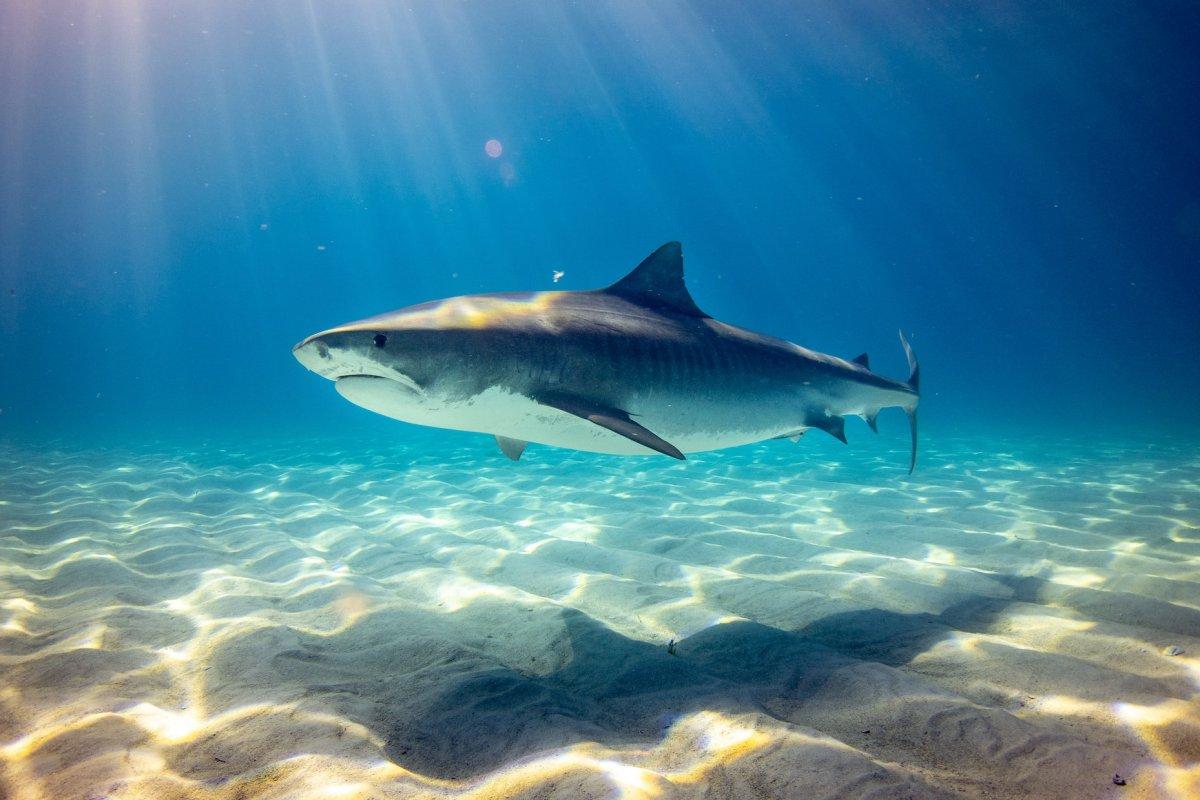
- Name: Sand tiger shark
- Scientific name: Carcharias taurus
- Conservation status:
The sand tiger shark, also known as the blue-nurse sand tiger, the gray nurse shark, or the spotted ragged-tooth shark, is a species of shark that can be found in the subtropical and tropical waters of the world, on any continent. Despite its fearsome reputation due to its sharp teeth and large size, the sand tiger shark is not a threat to humans and is actually quite docile.
This shark is on the brink of extinction, mostly due to its low reproductive rate, hunting for its fins and hide, and pollution.
20. Thylacine
- Name: Thylacine
- Scientific name: Thylacinus cynocephalus
- Conservation status:
The thylacine, also known as the Tasmanian tiger or the Tasmanian wolf, was a species of carnivorous marsupial native to Tasmania, New Guinea, and Australia. It used to be the largest carnivorous marsupial and was officially declared extinct in 1936.
This marsupial was shy and nocturnal and was a powerful apex predator. It became extinct because of hunting encouraged by bounties, the introduction of dogs, human encroachment, and disease outbreaks.
21. Southern cassowary
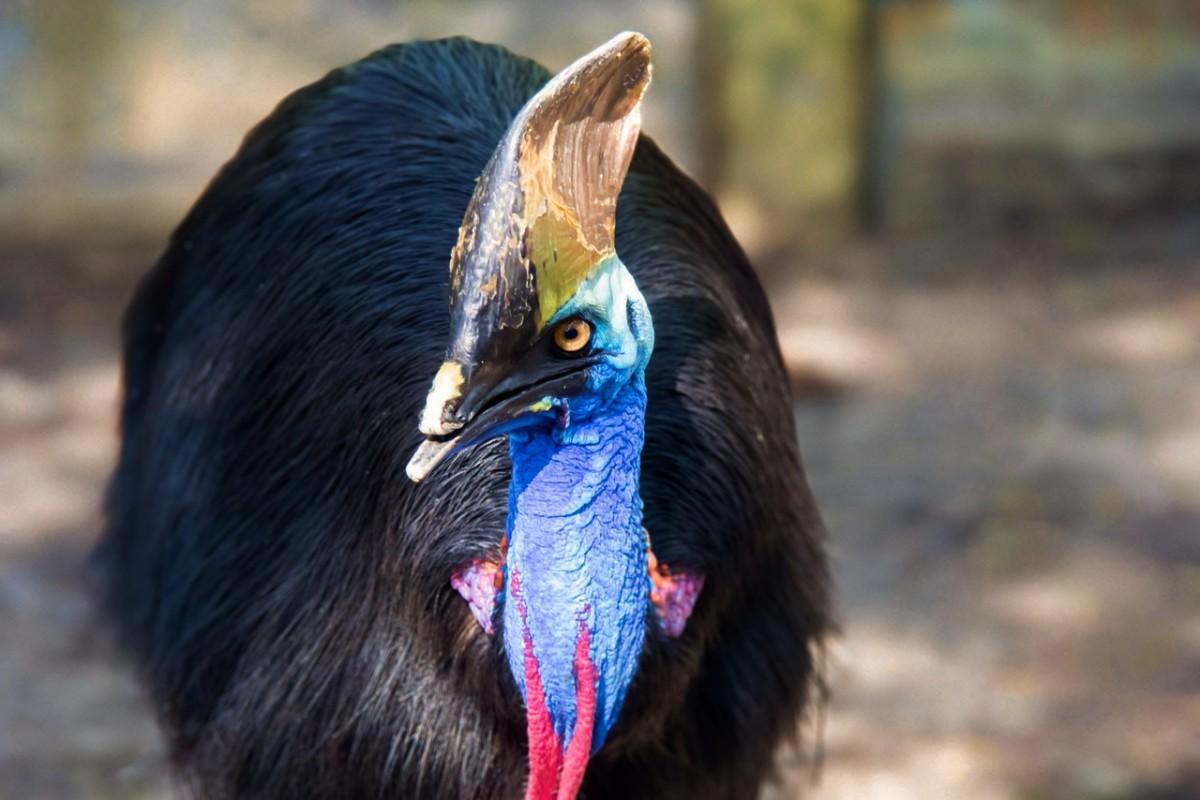
- Name: Southern cassowary
- Scientific name: Casuarius casuarius
- Conservation status:
The southern cassowary, also known as the Australian cassowary, the two-wattled cassowary, or the double-wattled cassowary, is a large species of flightless bird native to the northeastern coast of Australia, as well as Indonesia and Papua New Guinea.
It is a solitary, particularly dangerous bird: although only 2 human deaths have been recorded since 1900, it is often considered aggressive and has particularly strong, blade-like claws it uses to strike its target.
22. Numbat
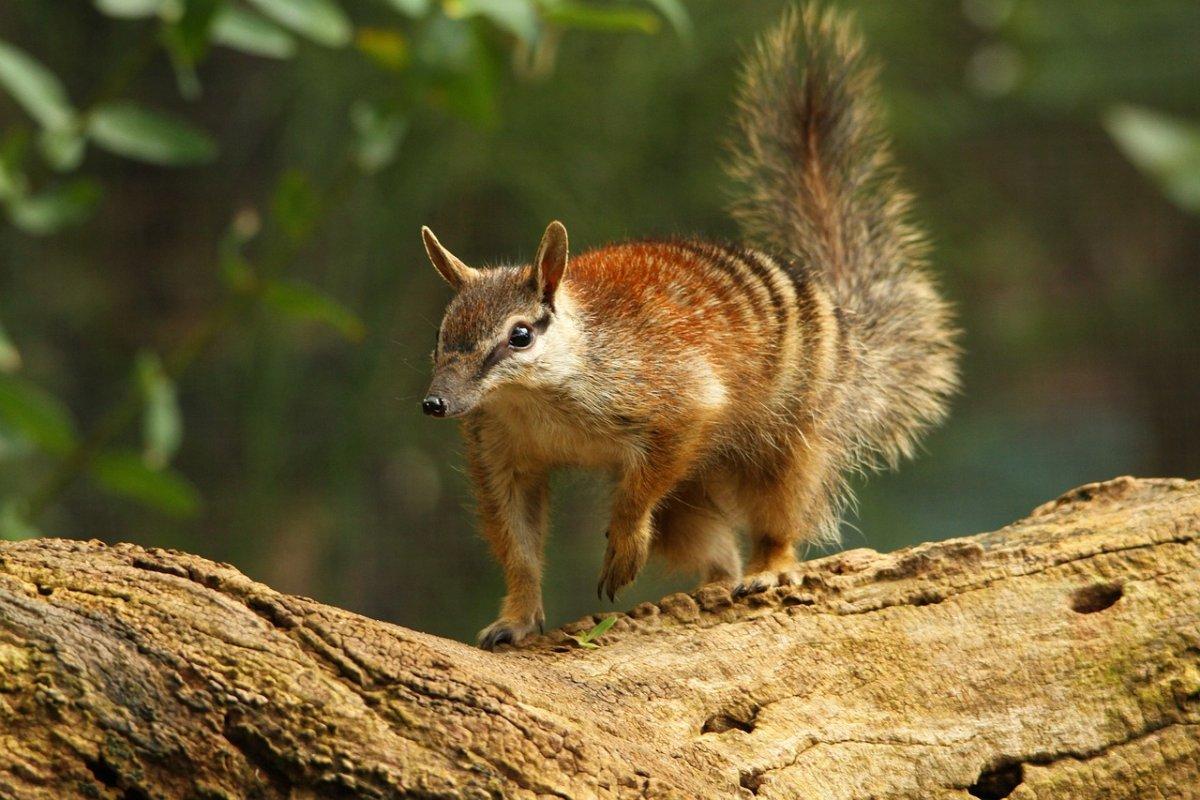
- Name: Numbat
- Scientific name: Myrmecobius fasciatus
- Conservation status:
The numbat, also known as the walpurti or the noombat, is a species of marsupial native to very small areas of southern and southwestern Australia. Due to this very small range, it is considered endangered, and it suffers from trapping and red fox introduction; now, there are only about 1,000 individuals left.
This mammal is insectivorous, and almost exclusively feeds on termites, eating up to 20,000 per day. It is the only marsupial fully active by day, and its main predators are reptiles and raptors.
23. Eastern brown snake
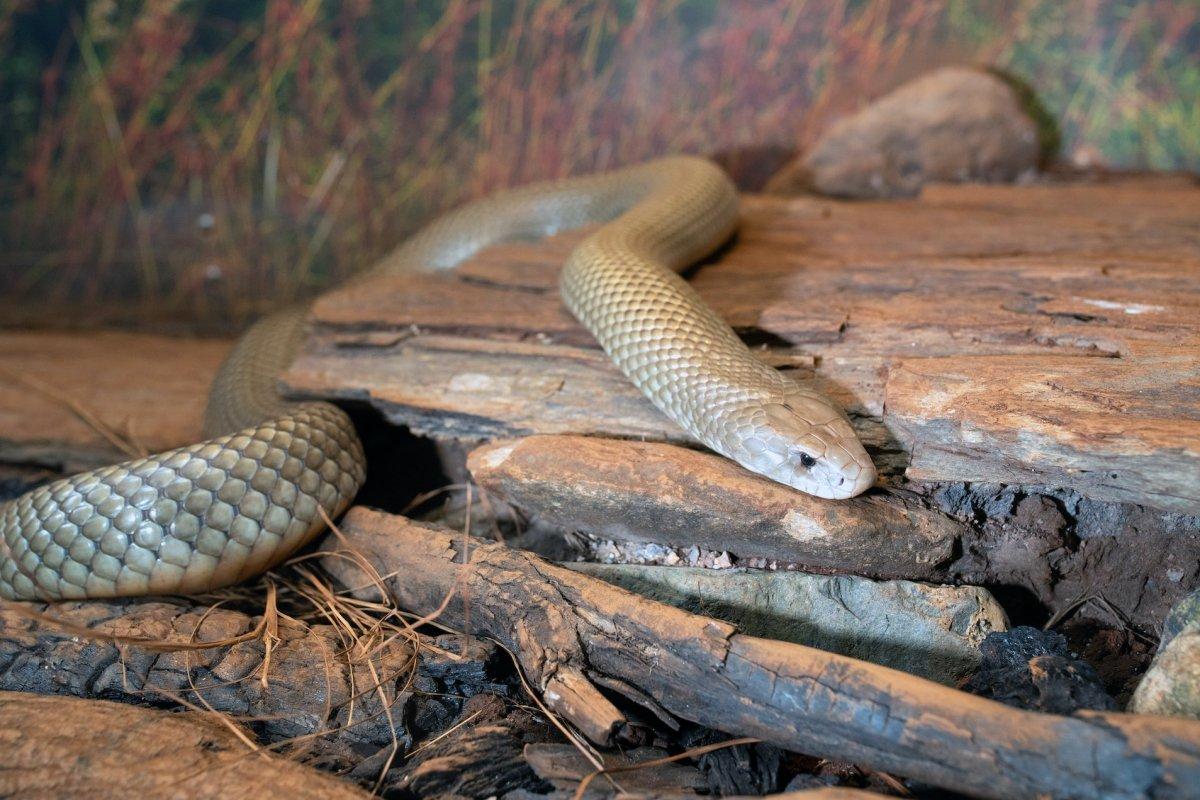
- Name: Eastern brown snake
- Scientific name: Pseudonaja textilis
- Conservation status:
The eastern brown snake, also known as the common brown snake, is the most dangerous species of snake in Australia. It is native to eastern and central Australia, as well as southern New Guinea, and is the second-most venomous land snake in the world after the inland taipan (endemic to Australia).
Despite being less venomous, it is much more aggressive than the taipan and is incredibly fast. Because of this, it is responsible for about 60 percent of snake-bite deaths in Australia!
24. Humpback whale
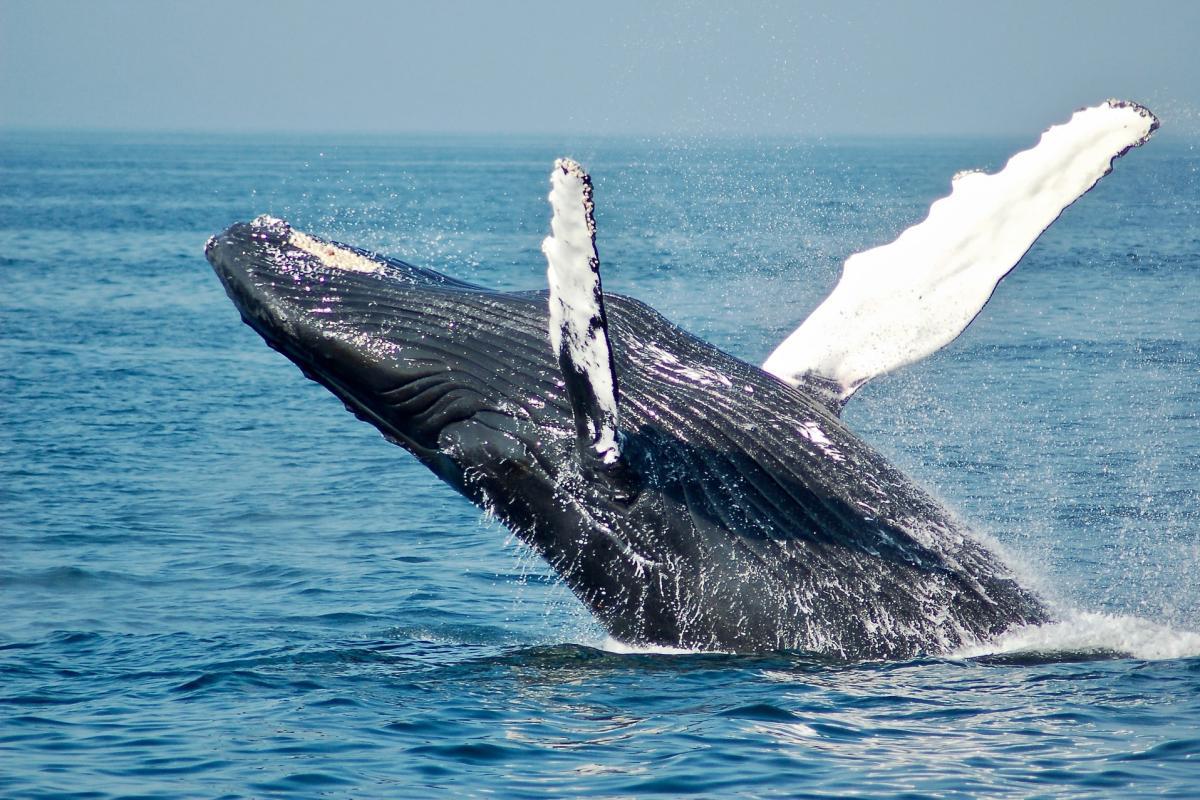
- Name: Humpback whale
- Scientific name: Megaptera novaeangliae
- Conservation status:
The humpback whale is a large species of rorqual and baleen whale. It can reach up to 17 m / 56 ft in length, and has a distinctive body shape, with a knobbly head and long pectoral fins.
If you ever had the luck to see a whale in its natural habitat, it was probably a humpback whale, which has distinctive surface-breaching behaviors and can be found throughout most seas and oceans of the planet.
25. Freshwater crocodile
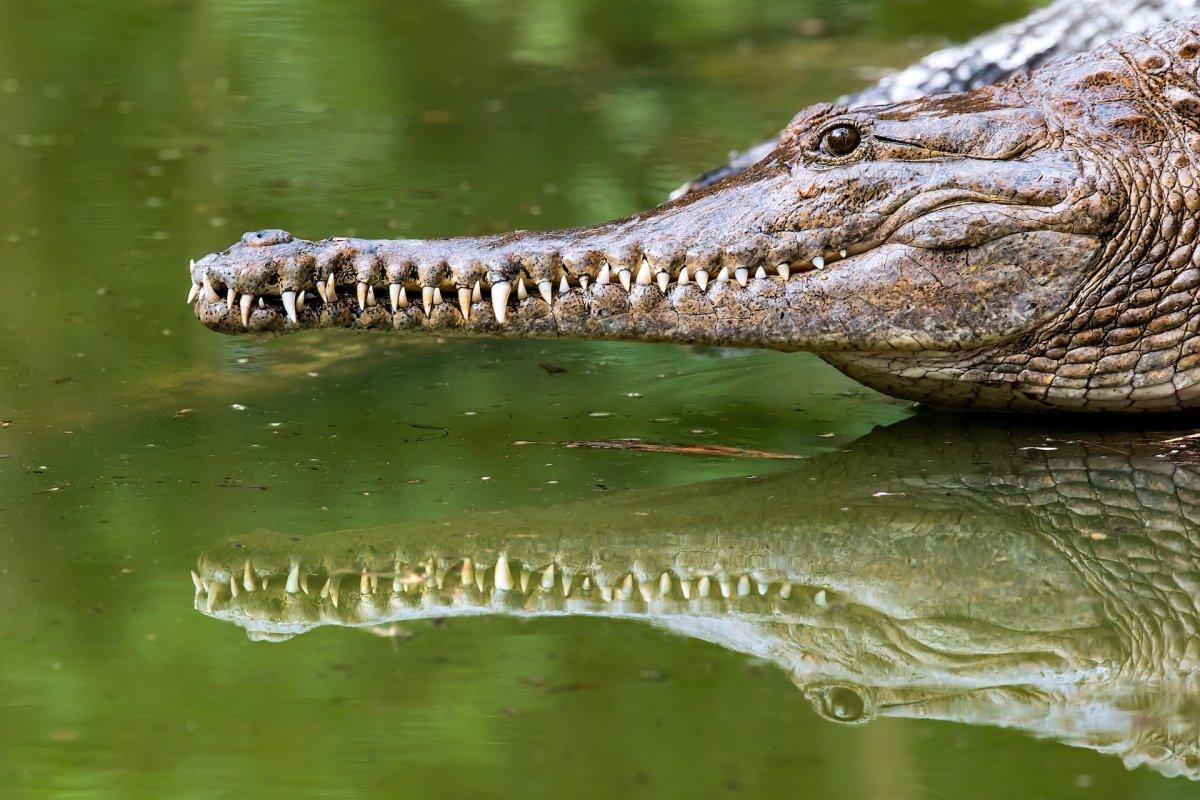
- Name: Freshwater crocodile
- Scientific name: Crocodylus johnstoni
- Conservation status:
The freshwater crocodile, also known as the Australian freshwater crocodile or Johnstone’s crocodile, is a species of crocodilian endemic to northern Australia. Contrary to the saltwater crocodile, it is quite small, not really aggressive, and lives in freshwater habitats such as wetlands, creeks, and rivers.
This reptile feeds on a wide variety of vertebrate and invertebrate prey, mostly insects, crustaceans, fishes, turtles, and snakes. Because of the invasive cane toad, the freshwater crocodile population is currently dwindling.
26. Cane toad
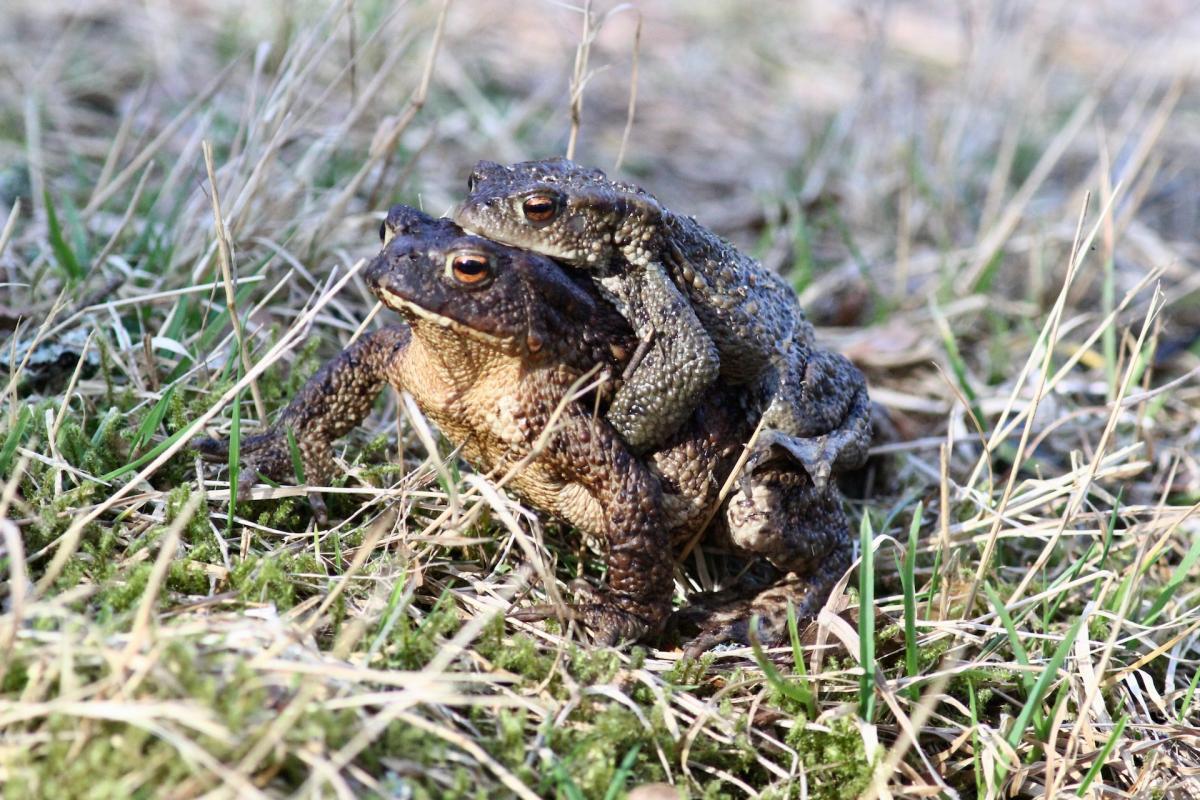
- Name: Cane toad
- Scientific name: Rhinella marina
- Conservation status:
The cane toad, also known as the marine toad or the giant neotropical toad, is a large species of invasive toad native to Central and South America but introduced to many parts of the world such as northern Australia and the Caribbean.
This toad is poisonous and is a prolific breeder. It is extremely toxic when ingested, and is the reason for the decline of many animals in Australia.
27. Great white shark
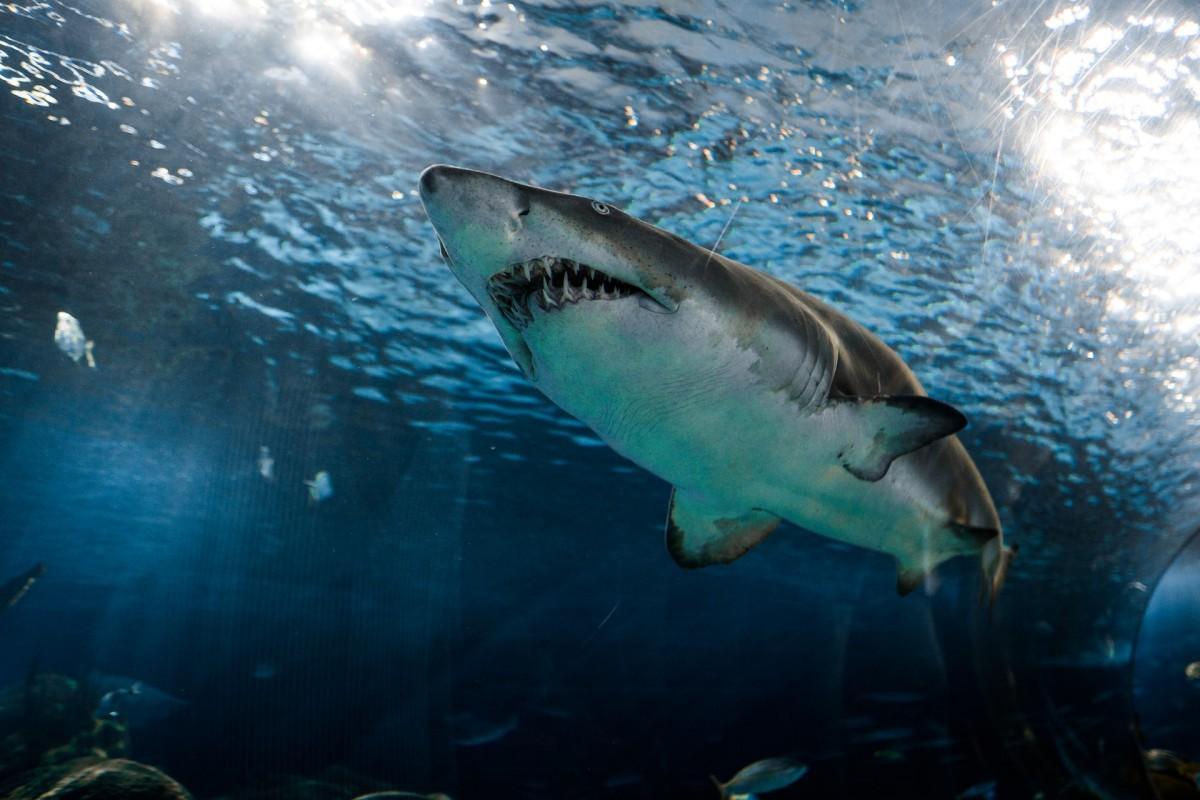
- Name: Great white shark
- Scientific name: Carcharodon carcharias
- Conservation status:
The great white shark, also known as the white pointer, the great white, or the white shark, is a large species of shark that can be found in all the coastal surface waters of the oceans. It is definitely the most famous shark and is a dreadful apex predator except for isolated cases of orca attacks.
Largely featured in the famous novel and movie “Jaws”, the great white shark is responsible for the largest number of fatal, unprovoked attacks on humans, although it is fewer than 10 times a year in the world.
28. Thorny devil
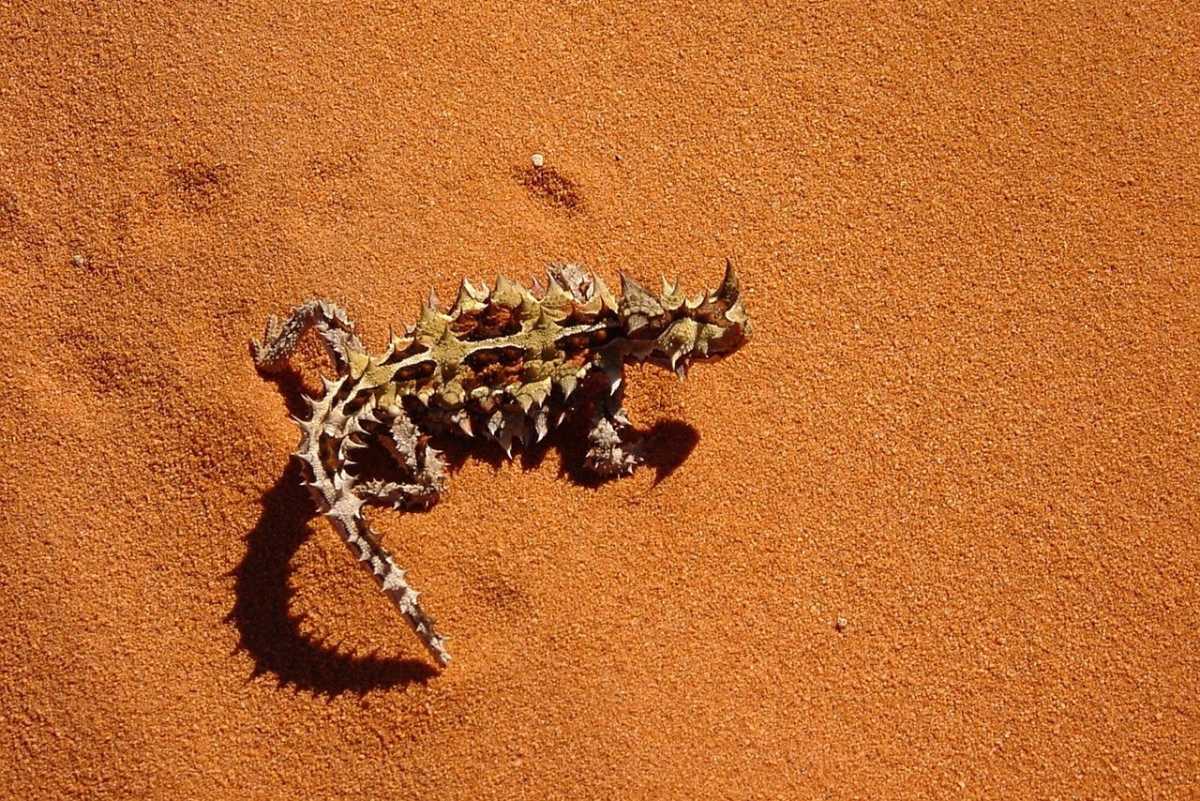
- Name: Thorny devil
- Scientific name: Moloch horridus
- Conservation status:
The thorny devil, also known as the moloch, the mountain devil, the thorny lizard, or the thorny dragon is, you guessed it, an incredibly thorny species of lizard endemic to Central and West Australia.
This unique species can grow to 21 cm / 8.3 in in length, and females are larger than males. The thorns that cover its entire body are ideal for intimidation and defense, and it even has a false head on its back it shows when attacked, which is even more intimidating.
29. Leatherback sea turtle
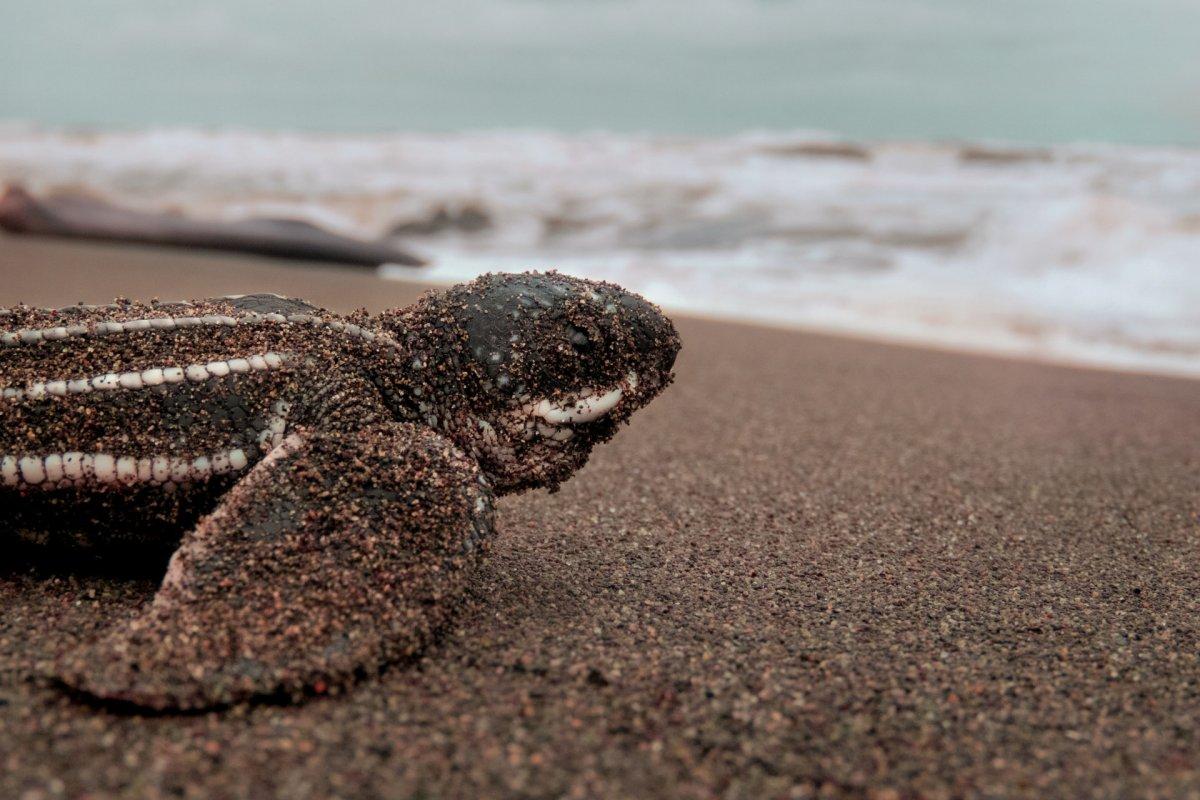
- Name: Leatherback sea turtle
- Scientific name: Dermochelys coriacea
- Conservation status:
Although there are 5 other species of sea turtle in Australia (the flatback, the hawksbill, the green sea, the loggerhead, and the olive ridley), I just had to mention the leatherback sea turtle.
Also known as the luth, the leathery turtle, or the lute turtle, this animal of all records is the largest turtle in the world and the heaviest reptile outside of crocodilians! It can indeed reach up to 2 m / 6.5 ft and 600 kg / 1,322 lb.
30. Orca
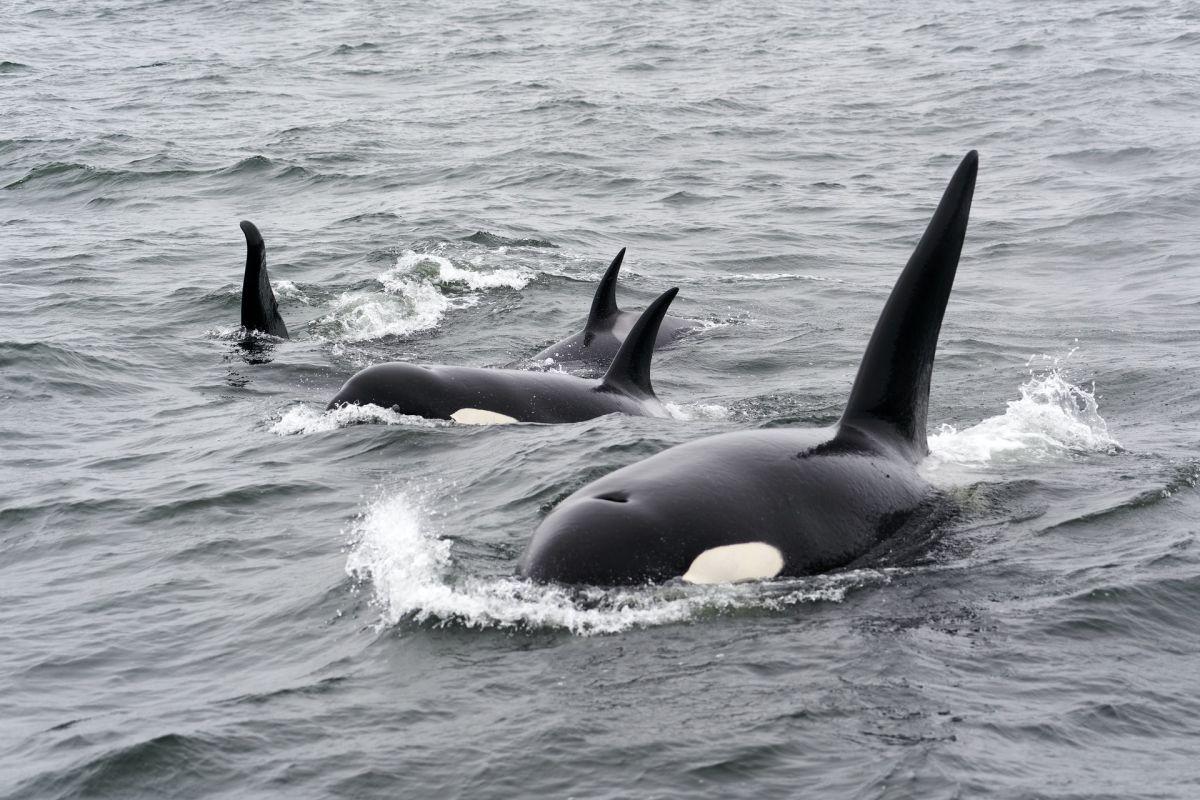
- Name: Orca
- Scientific name: Orcinus orca
- Conservation status:
The orca, widely known as the killer whale, is one of the scariest and most powerful apex predators on the planet. Despite its name, it only attacks whale calves and mostly feeds on seals, but attacks on adult blue whales, humans, and sharks have already been recorded.
This toothed whale can be found in the northernmost and southernmost areas of the planet, and in all waters around Australia.
—
So there you have them, these were my 30 wild Australian animals. I hope you enjoyed this list and that you learned something new today.
In case you want to learn more about the wildlife of Australia, feel free to keep reading, as I still have lots of things to tell you about:
Endangered Animals of Australia
This is definitely the saddest part of the list, but it is very important to raise awareness. Because of this, let’s go through the list of endangered animals in Australia.
Here are the animals in danger of extinction in Australia.
- Darling Downs hopping-mouse
- White-footed rabbit-rat
- Nullarbor dwarf bettong
- Lord Howe gerygone
- Mount Glorious torrent frog
- and 31 more…
- Mountain pygmy possum
- Central rock-rat
- Northern hairy-nosed wombat
- Sand tiger shark
- Slender carp gudgeon
- and 85 more…
- Green and gold frog
- Long-billed black cockatoo
- Striped legless lizard
- Angalarri grunter
- Non-parasitic lamprey
- and 169 more…
To see the full list of endangered species in Australia, head over to the International Union for Conservation of Nature’s Red List.
What is the National Animal of Australia?
The national animal of Australia is the kangaroo.
Not very surprising I know, considering the kangaroo is literally everywhere in the country and is its international symbol.
The kangaroo is a large species of marsupial that can be found on Australia’s currency, its coat of arms, its national rugby league team’s name, and the logo of the Royal Australian Air Force.
It has been hunted for thousands of years, especially by Aboriginal Australians, and is still shot to this day for its meat. In fact, there are more kangaroos than people in Australia!
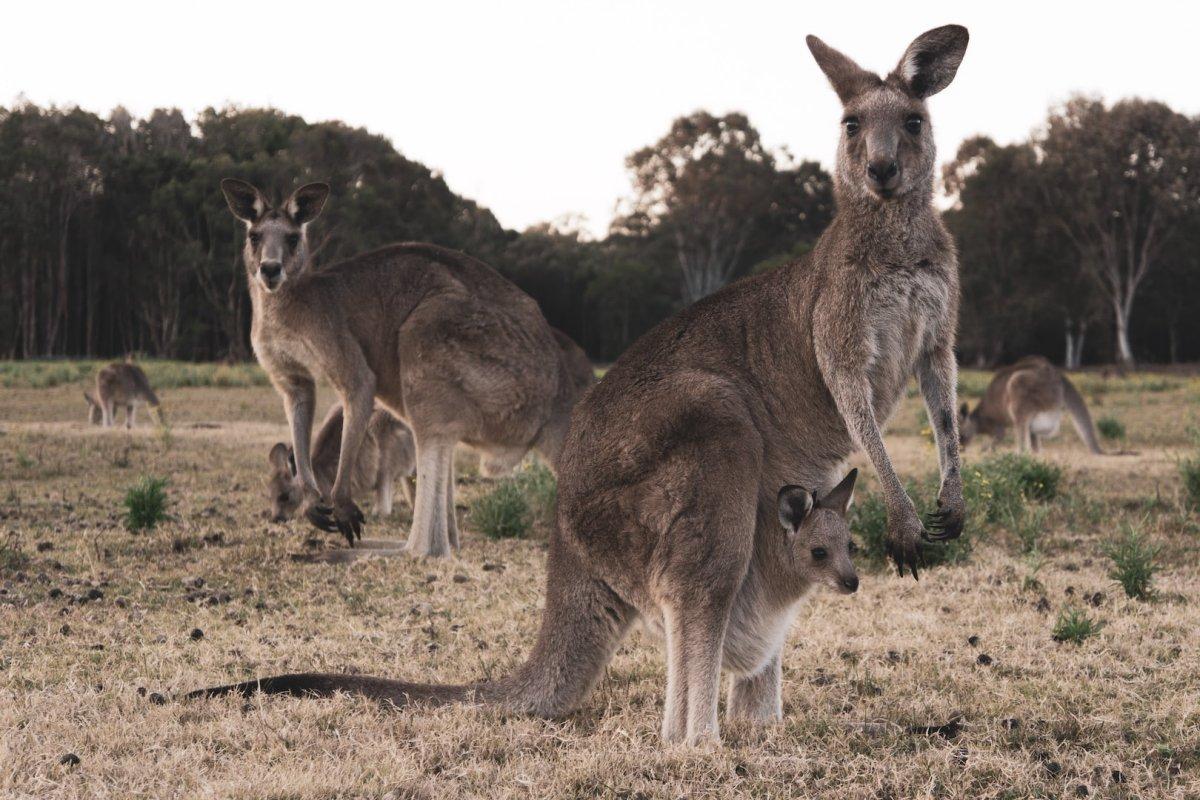
How Many Animals Native to Australia?
What is the diversity of native animals in Australia?
Let’s look at the total number of species of Chordata (mammals, birds, fishes, and reptiles).
Total number of animal species in Australia: 6,058 (9,917 in total in Oceania)
More About Animals in the World!
Loved these Australia animal facts?
Well, discover more through these posts, by state:
- Wild Animals in Western Australia
- Wild Animals in South Australia
- Wild Animals in Victoria
- Wild Animals in Queensland
- Wild Animals in New South Wales
- Wild Animals in Tasmania
Or check out other countries’ wild animals:
Or click here to see ALL the facts up on the blog! Spoiler alert: there’s A LOT of them.
Share the knowledge! Click on the buttons below to share information about these famous animals in Australia with your friends, and help them learn more about the world 🙂
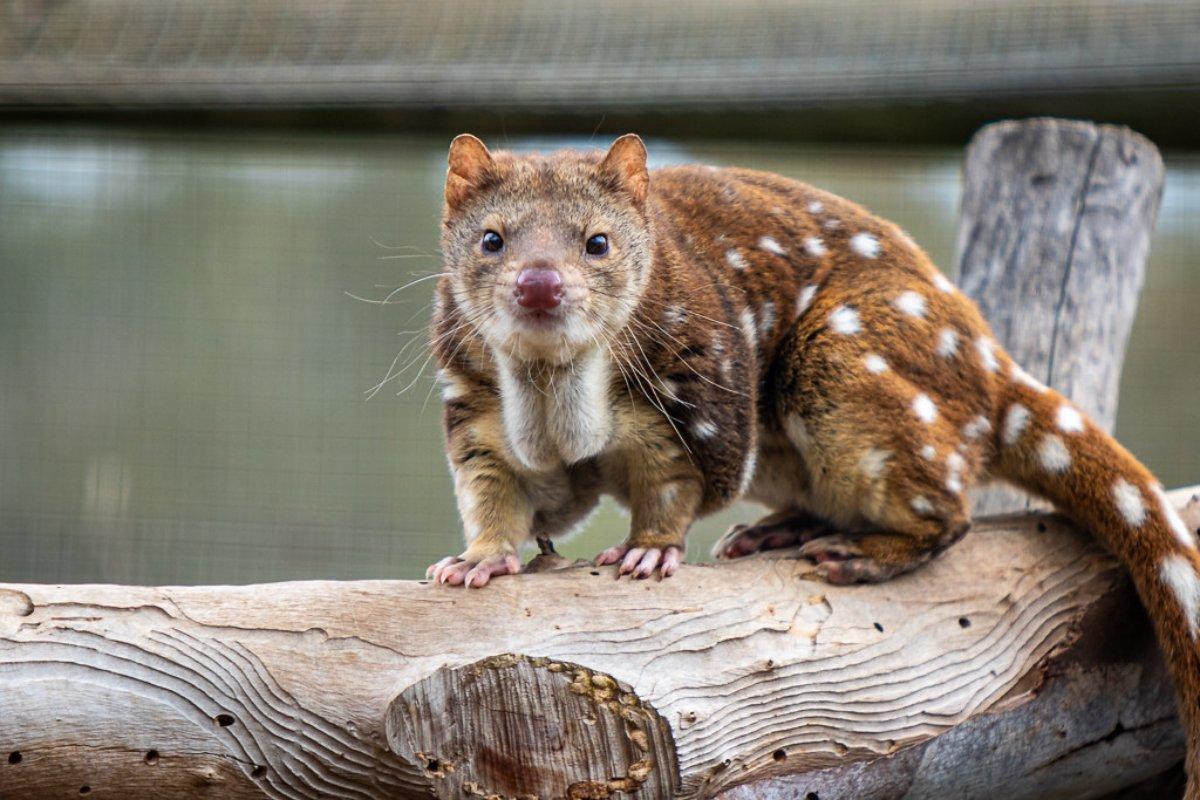
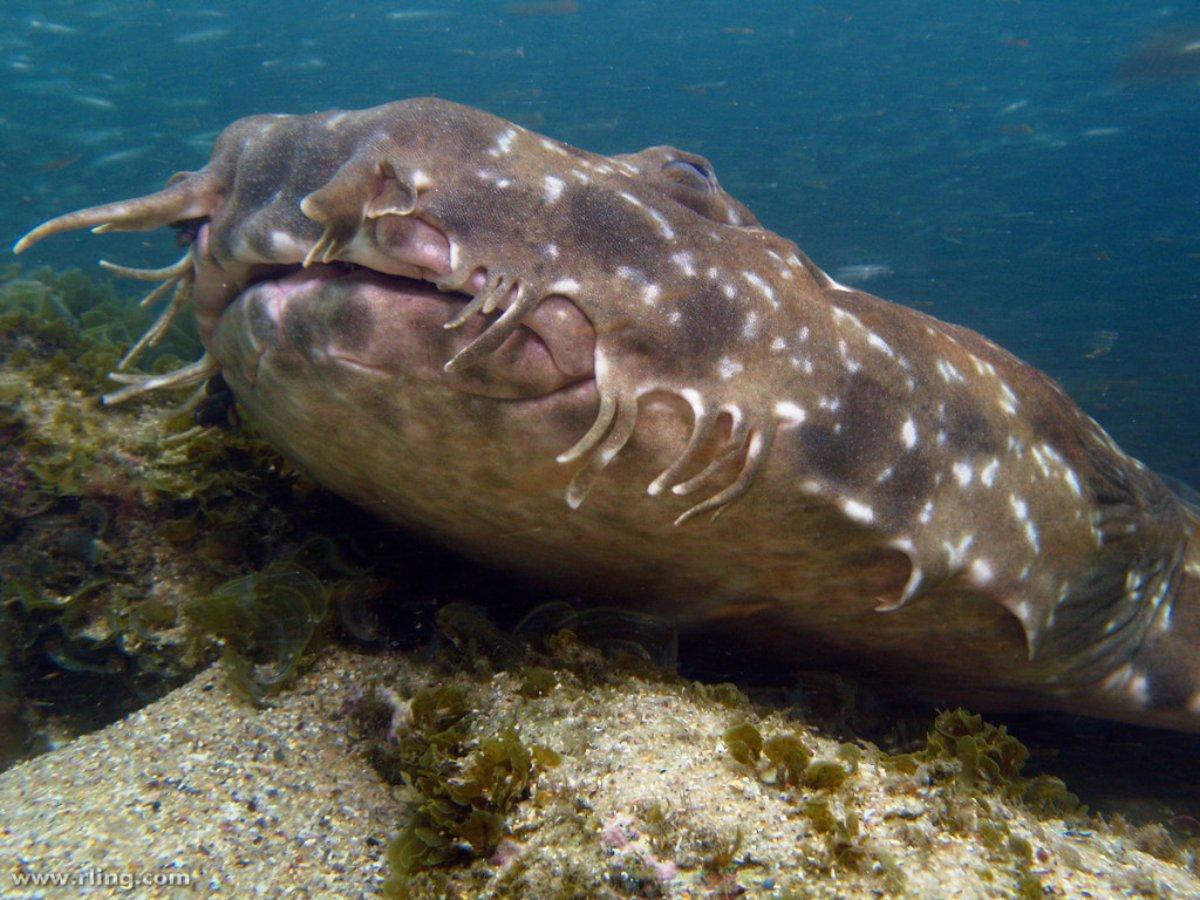

![18 Wild Animals in Cambodia [Wildlife in Cambodia]](https://www.kevmrc.com/wp-content/uploads/2022/12/18-wild-animals-in-cambodia.jpg)
![15 Wild Animals in Honduras [Wildlife in Honduras]](https://www.kevmrc.com/wp-content/uploads/2022/08/15-wild-animals-in-honduras.jpg)
![15 Wild Animals in Macedonia [Wildlife in Macedonia]](https://www.kevmrc.com/wp-content/uploads/2022/06/15-wild-animals-in-macedonia.jpg)